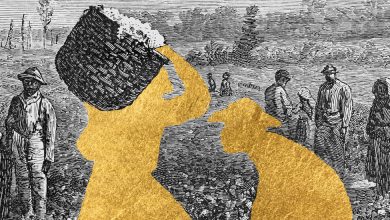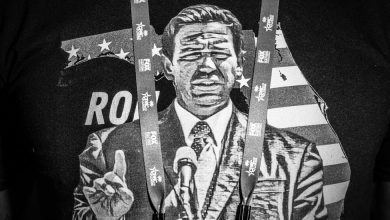Why I Still Love ‘West Side Story’

I adored Steven Spielberg’s new filmization of “West Side Story.” I thought it undid most of the problematic aspects of the still magnificent 1961 film — including sometimes one-dimensional aspects of its depiction of Latinos — while brilliantly presenting a signature piece of American theatrical art. Though I didn’t really need a refresher, it was still nice to be reminded of why it ranks second on the American Film Institute’s list of “The 25 Greatest Movie Musicals of All Time.”
Only to learn that quite a few critics weren’t sold on Spielberg’s version. They don’t deny its artistry, here and there, but some of them question the very value of rebooting “West Side Story.” CUNY Professor Yarimar Bonilla wrote a guest essay for The Times headlined “The ‘West Side Story’ Remake We Didn’t Need,” cataloging several points where, she says, the remake still falls short, despite Spielberg’s efforts to render cultural details with precision. The New Yorker’s Richard Brody wrote, “instead of reconceiving the story, they’ve shored it up with flimsy new struts of sociology and psychology.” New York magazine’s Andrea González-Ramírez acknowledged that “a ton of work went into details” to make the portrayal of the mid-20th century New York Puerto Rican community “feel more historically accurate and real,” but ultimately thinks “‘West Side Story’ Can’t Be Saved.” Writing for Slate, Odie Henderson called “West Side Story” “a dusty, outdated, racist musical that hit the Great White Way when my mother was in grammar school. Sure, it has some great songs, but so does ‘Porgy and Bess,’ the even more racist opera that also keeps getting restaged.”
So: It’s time to just chuck “West Side Story”?
Why? Partly because of matters from back in the day: In both the original 1957 stage version and in the 1961 film, Maria, the puertorriqueña romantic lead, was played by white women. I’d add that “West Side Story”’s creators — Leonard Bernstein (music), Stephen Sondheim (lyrics), Arthur Laurents (script), Jerome Robbins (choreography and direction) — made it at a time when a version of the story created by Puerto Rican artists wouldn’t have drawn broad public interest.
Both Brody and González-Ramírez argue that “West Side Story”’s white creators set out to make a musical about a clash between Jewish and either Italian or Irish kids, but then, writes Brody, “shifted their focus to people they knew nothing about.”
González-Ramírez argues that “West Side Story” fails in part because “no matter how much authenticity you try to bring” to it, it “requires that Puerto Ricans ultimately be the antagonists” — akin to the (valid) criticism of undeniably lopsided portrayals of Native Americans in countless westerns.
And there’s the song “America,” in which the women from the Sharks, the story’s Puerto Rican Capulets, sing “I like to be in America” as they run through a list of reasons to dis their Caribbean homeland — which some Puerto Ricans may have done while maintaining a fundamental affection and allegiance, but comes off differently in lyrics by a white writer. (Also, yes, Puerto Rico is in America.)
The idea behind many of the critiques is that the various incarnations of “West Side Story,” including the most recent one, fall short in capturing the perspective of actual Puerto Ricans. That, in the first place, the show’s creators should have steered clear, that the remake should have been skipped as well, and that the enlightened response is to tally the inauthenticities in the remake and the older versions and treat the sum as grounds for classifying “West Side Story” as an unwanted relic.
But here is what many may feel, while sensing that they are not supposed to ask: Are we to treat as the conclusive measure of a work of art the extent to which it accurately portrays the perspectives of the real-world versions of the characters it portrays?
If people in a minority group are depicted with derision, then yes, we must discuss. But the Puerto Rican characters in “West Side Story” — be it the original stage musical, the 1961 film or the 2021 one — are depicted richly and sympathetically, even if not as much so as our current values would urge. Quite unlike, let’s say, the utterly unpardonable and now all but unwatchable Mr. Yunioshi character played by Mickey Rooney in “Breakfast at Tiffany’s,” another movie from 1961.
As I see it, none of what’s wrong with “West Side Story” justifies parsing it as a retrogressive or carpetbagging affair best consigned to the artistic filing cabinet. That imposes a too-rigid level of identity politics on something that deserves a more nuanced approach. We should understand its weaknesses while enjoying its strengths rather than turning away from them.
González-Ramírez writes that “Almost nothing in the film is sonically Puerto Rican” and that “There’s a lack of imagination in what the score could be.” Perhaps she’s right to point out that “there’s no plena, bomba, salsa, aguinaldos.” But “West Side Story”’s music in no way lacks imagination. Let’s take a stroll on over to the piano.
To play just the introduction to “A Boy Like That” (the admonition/indictment sung by Anita, Maria’s would-be sister-in-law) is to savor the foreboding gloom of the chromatic dissonance Bernstein used in the harmony. This thundercloud rumble perfectly communicates Anita’s fury. Here, Bernstein made use of a chordal texture that harkens to the Romantic and especially Impressionist traditions in classical music unavailable to, for example, Mozart in his scoring of the Commendatore’s music in “Don Giovanni.”
How do you render a furious lament as lush harmony? You score “A Boy Like That,” as Bernstein did, not just for clarinet but with the more cynical-sounding bass clarinet, and not just one of them but three, croaking out the bile in harmony pitched low. Bass clarinet choiring of this kind was not only imaginative but also profound in its ability to tell us, the listeners, just how Anita felt.
During Maria’s idealistic reply, “I Have a Love,” she sings “I have a love / and it’s all that I need / right or wrong …” and under the word “wrong” Bernstein used a chord with a shard of dissonance in it. That chord, even subconsciously, conveys Maria’s bundle of conflicting emotions, despite the straightforwardness of her phraseology. She’s sad, reeling, still frantically in love with no resolution to her plight anywhere to be found, and Bernstein gets it across with his use of tritones, unresolved musical intervals found throughout “West Side Story”’s score possessing a tortuousness that can convey as many sumptuous dimensions as marjoram.
These particular musical approaches may not be the ones an artist would use in scoring this scene if they sought to portray Anita through musical genres of the Spanish-speaking Caribbean. And we certainly must, and want to, hear how New Yorkers of Caribbean descent portray themselves. In that vein, Lin-Manuel Miranda has given us a sense (yes, just a Broadway- and Hollywood-ized sense) of New York Dominican musical expression in his and Quiara Alegría Hudes’s “In the Heights.” It should be said that that musical’s film adaptation, too, faced criticisms about its authenticity.
All that said, I contest any idea that making or remaking “West Side Story” was a misstep. Rather, the “West Side Story” score is a kind of reaching across, an attempt at rendering the sensibility of others. An effort to walk, musically, in someone else’s shoes.
The idea that “West Side Story”’s rendition of its Nuyorican characters was and is a kind of artistic tort is shaky. What “West Side Story”’s creators made is a hybridization so resonant that one of this country’s true auteurs brought it back 60 years later.
Is it really a kind of progress, then, to suggest that for those of us, including many Latinos, who love “West Side Story,” our continued affection for the piece qualifies as uncritical or misplaced? I’m with Rita Moreno, a star of both films, who acknowledges that in the original film some characters were “unfleshed-out,” but describes the new film as “joyous” and credits Spielberg and Tony Kushner, who wrote the screenplay, for its added dimensions.
Plenty of people will prefer other, more contemporary musical forms and performance styles, or would find a story told from the minority point of view more interesting or worthwhile. Quite OK. But in deciding whether “West Side Story” amounts to a mistake, we might consider that among the reasons Spielberg says he remade it, he notes, “Divisions between un-likeminded people is as old as time itself,” adding that given our current discourse, the story is “more relevant to today’s audience than perhaps it even was in 1957.”
Have feedback? Send a note to [email protected].
John McWhorter (@JohnHMcWhorter) is an associate professor of linguistics at Columbia University. He hosts the podcast “Lexicon Valley” and is the author, most recently, of “Woke Racism: How a New Religion Has Betrayed Black America.”





